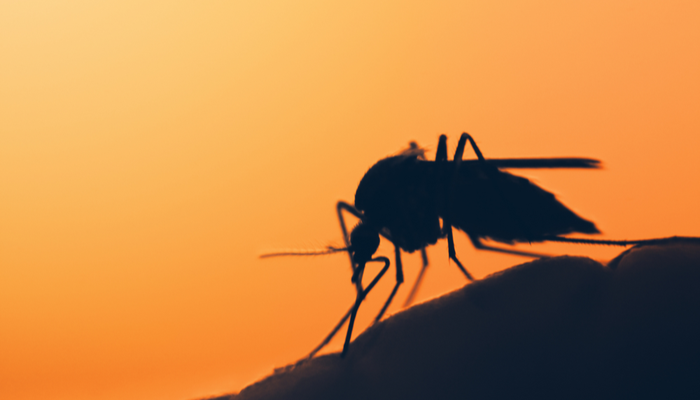.jpg?width=700&name=So%20much%20science,%20so%20little%20time%20(Spring%202019%20edition).jpg)
How can it be April already? With time springing on so swiftly, it’s hard to stay totally tuned into all the latest science news and stories. But have no fear, below we’ve rounded up some recent discoveries that are sure to get your brain cells bouncing around like the Easter Bunny!
So why not put a (scientific) spring back in your step, and read on to find out about the likes of singing mice, nanoparticles that enable night vision and a genetic predictor of marital happiness?!
Love is in the genes
It turns out that love isn’t all you need to make a marriage work—genetics may also play a role. Genetic variation in the receptor for oxytocin (known as the ‘love hormone’ due to its role in social bonding) is linked to social skills, sensitivity to stress, and mental health, which could mean the difference between a marriage made in heaven or in hell.
A recent study delving into this link has uncovered how an oxytocin receptor variant (‘OXTR rs53576’, if you’re curious) may affect long-term happiness in a marriage. In a survey of 178 married couples (aged 37 to 90) with known genotypes, it was found that spouses with the ‘GG genotype’ had greater marital satisfaction and less anxious attachment than couples with other genetic variants (AG and AA).
So, the course of true love may run more smoothly if you have the right genotype (and if you help with the washing up from time to time…just saying).
Mice, mice baby
If there were ever an X-Factor for animals, ‘Alston’s singing mouse’ (Scotinomys teguina) would surely win every time. These musical mammals put Madonna to shame as they belt out songs in their native forests of Central America. Believe it or not, when doing this they’re performing communicative ‘duets’ in which they politely take turns to sing, much like (most) human conversation.
Their back-and-forth songs have made these melodic mice something of a legend in neuroscience research, helping to uncover how the brain controls conversation. A study recently published in Science has revealed that two brain systems share the work: one system controls the patterns of notes that form the songs, while another coordinates turn-taking with another mouse.
As well as revealing how the brain controls conversation, the researchers hope that studying these tuneful rodents could help us better understand autism, a disorder that can impair a person’s ability to communicate. Here at BioStrata HQ, we can’t sing their praises enough!
A liquid asset
We live in a world where an estimated 780 million people do not have access to safe drinking water. That’s just over twice the population of the United States currently at risk of contracting devastating and potentially fatal diseases every time they take a drink.
But there is some light at the end of the tunnel: new photocatalyst-based technologies are promising to be an effective and inexpensive method of purification. When illuminated, photocatalysts release electrons to create oxygen-based chemicals, which blow microbes right out of the water!
Making waves in this field is the recent creation of a new photocatalyst, a 2-D sheet of graphitic carbon nitride, which has added chemical groups that sneakily lure electrons toward the sheets’ edges. There, the electrons bind to oxygen atoms in water to form microbe-busting chemicals, such as hydrogen peroxide.
Amazingly, this material can kill almost 100% of bacteria in 10 litres of water, producing enough safe daily drinking water for a family of four. As the prototype begins to be scaled up for commercial use, perhaps this might help quench the world’s thirst for safe drinking water once and for all.
Seeing is believing
Most of us have heard of the myth that eating carrots helps you see in the dark. If you didn’t know already, this isn’t strictly true (sorry, the secret’s out). New research however is showing that being able to see in the dark isn’t such a mythical concept after all—not by eating carrots, but by using specialised nanoparticles.
Neuroscientists have recently given mice the ability to see in the dark by injecting their eyes with said nanoparticles, which are able to convert infrared (IR) light into visible light. Electrophysiological recordings and behavioural tests uncovered compelling insights showing that IR light triggered responses in the retina and visual cortex, and that the mice were able to recognise distinctive objects in the dark.
As mice and humans have similar visual physiology, future versions of these visionary nanoparticles could give emergency and military personnel enhanced night vision, as well as help treat visual disorders such as macular degeneration or age-related vision loss. With these extraordinary benefits within our sights, it makes us think there’s more to nanotechnology than meets the eye!
Chemo clean-up
Chemotherapy is one of the few treatments available to cancer patients, often being delivered intravenously in the hope that the active element reaches the cancer site. In doing so, the drugs often wreak havoc elsewhere, creating harmful side effects including vomiting, fatigue, immune suppression, or even heart failure.
But now a tiny tool has been developed that can be implanted into the patient to soak up excess drugs like a sponge, and prevent these toxic side effects!
These 3-D-printed objects are tiny cylindrical sponges that are wedged inside a vein (near a tumour site) to absorb any excess chemotherapeutic drugs—before they have a chance to go into general circulation. Recent tests have shown that these sponges capture nearly two-thirds of a common chemotherapy drug, without causing any other health problems such as blood clots. Fantastic news indeed!
Picking your brain
The brain is a mysterious organ. Until now, we simply haven’t had the tools to go deeper than the ‘soup level’, in which diverse nerve cells are grouped and analysed together. But two new studies have shown that, with the combination of powerful new techniques in microscopy and cell biology, scientists can now make huge leaps forward in understanding how the brain operates.
A new powerful microscope called a ‘lattice light sheet microscope’ sweeps a thin sheet of laser light through the brain to reveal nerve cell structures (it’s probably not as painful as it sounds). By combining this with expansion microscopy—that is, infusing neurons with a gel that blows them up like a balloon while preserving the structure (also, probably not that painful)—features of individual nerve cells in the brain have been revealed for the first time.
Not only that, neuroscientists have been able to monitor individual nerve cell behaviour and activate them at will, to change the eating behaviour of mice. This has only been possible through recent advances in microscopy and an advanced form of optogenetics, a technique that uses laser light to control genetically engineered nerve cells. Kudos to the scientists who had these brainwaves!
See you next time for the Summer edition—meanwhile, we challenge you not to dream about a singing mouse dressed like Madonna that can see in the dark!
Put your finger on the pulse of all the latest news in life science and marketing and subscribe to our monthly newsletter:





